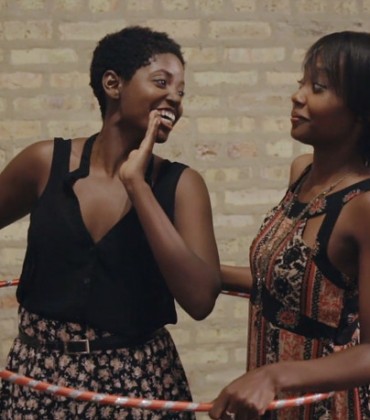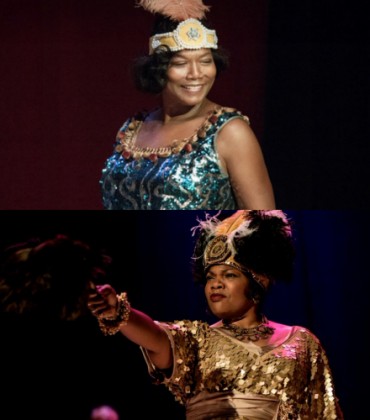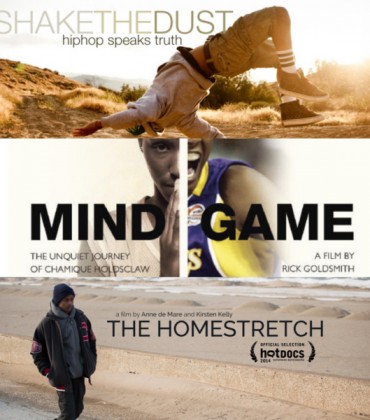
Somewhere in the Middle
In his first feature film, August the First, Lanre Olabsi tackled the complexities of familial love and discord in a well-crafted manner. In his sophomore effort, Somewhere In The Middle, Olabsi weaves together the perspectives of three young professionals living in New York City (although four people are involved in the storyline). From varying viewpoints, we get bits of the story through a nonlinear form of narrative. Stylistically, the two films are as different as night and day, but what rings throughout each film is the filmmaker’s commitment to telling our stories in a well-thought-out and cared for regard. This is especially evident in Somewhere In The Middle, with Olabsi producing, writing, and directing the film.
At the center of SITM lies Billie (Cassie Freeman), Kofi (Charles Miller), and Sophia (Marisol Miranda), who are involved in a set of complicated interpersonal dealings. Billie, a boss at a graphic design firm is separated from her husband Kofi, a charming paralegal manager. While we never find out the origin of the couple’s friction, we see Kofi actively pursuing his wife in hopes of mending the far from perfect relationship. Billie seems to be the one in control and Kofi looks to her throughout the film for some sort of green light toward reconciliation.
Sexually unfulfilled and not as invested as Kofi, Billie soon finds herself attracted to her female co-worker, Alex. Billie ends up crashing at Alex’s place and things turn sexual one drunken night, but the interaction falls short of a kiss. From the beginning of the film, we meet Sophia, a freelance graphic designer and patient of Kofi’s older therapist brother, who serves as a voice of reason throughout the film. After almost obsessively pursing Kofi, and Kofi dancing back and forth with the idea of being with Sophia, the two go on two dates before sleeping together. While in Sophia’s apartment Kofi finds that his lover freelances at his wife’s graphic design firm. This information results in the two engaging in a lovers quarrel in the streets, which is when Billie sees the entire interaction go down. Things unravel between Kofi and Sophia as well as Kofi and his wife. All involved are left to their own devices and the film ends somewhat unresolved. Things fall apart but we never quite see where each individual is once the dust has settled.
There are many themes at play in this fresh take on the complexities of love. Themes that run rampant throughout like love, loss, and loneliness. While not morally bankrupt, all involved seem to have good intentions but situations unwantingly go awry as they tend to do in life. Kofi seems sincere in wanting to reconcile with his wife but his immature nature is tempered toward running when things get tough. Sophia’s obsessive nature toward Kofi make us question themes of loneliness and intimacy; her need for intimacy is evident throughout the film. Billie’s need for exploration wedge a distance in her relationship with Kofi. She cares for him but she’s unsatisfied emotionally and one could even argue, sexually.
Although drama filled, and at times chaotic, there’s much to love about Somewhere In The Middle. It’s said that the film was a product of a yearlong improvisational technique used by the actors and those involved. This paid off in witty quips here and there and the cast’s chemistry was obvious, Billie (Cassie Freeman) was especially magnetic. Lanre Olabsi’s vivid while not new storytelling technique drew the audience in from start to finish. From the beginning of the film we were able to see Sophia’s truth, then Kofi’s and Billie’s. In a well-paced manner we were able to sift through the story bit by bit, viewpoint after viewpoint. This made for an interesting movie going experience. Although ultimately things fell apart, the storyline was kept fresh throughout.
SOMEWHERE IN THE MIDDLE Trailer from NY Independent Film Collective on Vimeo.
Sand Dollars or (Dólares de arena)
Junot Díaz, a Dominican-American writer, is an expert of sorts on life in the Dominican Republic. In his masterpiece “This Is How You Lose Her,” a compilation of vignettes, the main character Yunior goes back to the Dominican Republic with his girlfriend in hopes of salvaging what’s left of a broken relationship. On this particular trip, Yunior and his girl spend sometime at an affluent resort. It’s the type of paradise you see romanticized in your typical Hollywood flick, or in those Sandals resort commercials we see so often wishing to be whisked away to. At one point in the novel Yunior makes a simple observation about the white European tourists littered on the beach. “They look like professors, like budget Foucaults, and too many of them are in the company of a dark-assed Dominican girl. I mean it, these girls can’t be no more than sixteen, look puro ingenio (pure genius) to me. You can tell by their inability to communicate that these two didn’t meet back in their Left Bank days.” Diaz’s apt commentary points to the social issues inherently tied to the tourism trade in the Caribbean and the Dominican Republic–a long standing contract of relations that more often than not dissipate into a fleeting memory. The film Sand Dollars, directed by Israel Cárdenas and Laura Amelia Guzmán, is a fitting commentary on the role of sex work; while not the focal point of the layered and complex story.
Sand Dollars follows sex worker Noeli, a gorgeous Afro-Dominican young woman, who splits her time between her boyfriend and her much older lover, Anne. Noeli finds herself like many working class poor, having to make ends meet however she can. At the beginning of the film we find the beauty on the beach in the company of a much older European man. We then find Noeli basking in the hot sun, swimming alongside her lover, Anne, and not much later, she’s seen at home with her boyfriend. The audience quickly realizes that Noeli’s sex work is simply a means to an end– she’s marooned by her poor circumstances. Contrary to Noeli, Anne, a rich European, finds herself attached and smitten by her young lover. This isn’t to say Noeli is without affection for Anne. The film centers on the dynamics of Noeli’s and Anne’s relationship, adding an interesting yet complex layer to the story—whether Noeli has the ability to love the much older Anne and are there elements of fetishization tangled in Anne’s affection?
In the film, many issues come into play, including female homosexuality or rather the fluidity of female sexuality, sex work, and the working class poor. Issues of race, class and gender also play a role. For instance, Noeli’s lover, Anne, comes from an affluent background, giving her some form of control in the relationship. There’s a imbalance there; without the issue of money, the power dynamics would be much different. Also, throughout the film, Noeli’s boyfriend puts financial burden on her. At one point, after being mugged, and without funds, Noeli decides to take it easy, avoiding Anne all together. After being questioned by her boyfriend as to why she isn’t going to see the old lady, Noeli replies tells her male companion that he isn’t the man after all — he should be the one out there working, but instead she’s having to.
Trying to escape the confinement of her environment, Noeli and Anne make plans to leave for France together. Soon after we find that Noeli is pregnant by her boyfriend but she leaves him after tensions arise. At the end of the film, Noeli is confonted by her boyfriend, he pledges his love for her and the two lovers run off into the sunset together not knowing what the future will bring. When all is said and done, we see the characters for who they are- two poor youngsters in love. Their love is as complex as ever, given the unusual circumstances that they are faced with– but nonetheless, all the money and security couldn’t lure Noeli away from her love.
Key elements that plague the island nation are addressed in the film but not in a typical clichéd manner. While we experience picturesque beaches and bucolic scenes of the Dominican countryside, there’s nothing to romanticize about Noeli’s life. We see the shack she lives in, her dire needs, the poverty. While involved in sex work with a woman, this isn’t a film about homosexual love between lovers, it’s rather a situation of circumstance, a mere exchange of love for money. Some assert that Noeli should have taken her golden ticket to France where life would have been substantially better but I couldn’t disagree more. While heartbreaking for Anne, I found the ending to be realistic and I wasn’t at all unsettled by Noeli’s decision because sometimes all we have in life are our decisions and however poor they may be Noeli and her boyfriend seemed to have a genuine connection. All in the money in the world can’t buy real love.
Trailer – Sand Dollar – ATLFF15 Official Selection from Atlanta Film Festival on Vimeo.
For more info head over to the Atlanta Film Festival.





[…] SuperSelected.com finds, “This made for an interesting movie going experience. Although ultimately things fell apart, the storyline was kept fresh throughout.” […]